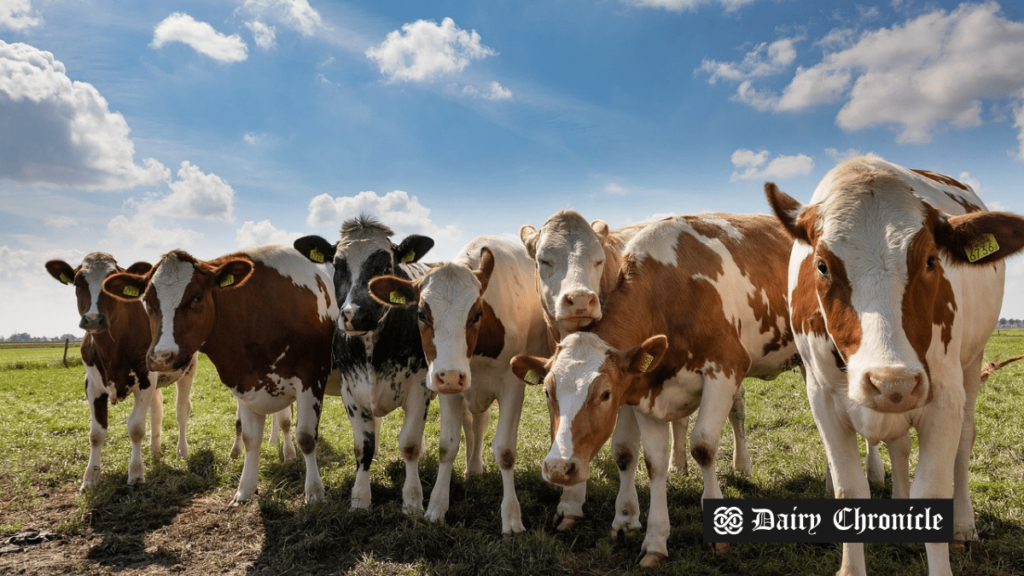In the grasslands of Xinjiang, China, the dairy industry has undergone a remarkable transformation, integrating technology and sustainable practices. With large-scale farms like Tianrun leading the way, the region has improved milk production and quality while managing waste sustainably. Key historical developments, investments in forage, and a newfound consumer interest have positioned Xinjiang as a rising dairy powerhouse.
In the expansive grasslands of Xinjiang, China, a remarkable transformation in the dairy industry has taken place over the past several decades. Today, cows graze comfortably while listening to Beethoven, equipped with pedometers to track their movements and sensors streaming data about their milk production and health for real-time analysis. This integration of technology is a testament to the modernization of Xinjiang’s dairy sector.
A New Era of Dairy Farming
Historically known for its rugged landscapes, Xinjiang has leveraged key opportunities to modernize its dairy industry. By promoting large-scale, standardized farming practices and optimizing milk production processes, the region has consistently improved the quality of its raw milk. As a result, Xinjiang’s dairy products have gained popularity and are increasingly found on tables across China.
At facilities like the Tianrun Beacon Tower Dairy Farm in Urumqi, traditional manual care methods have been replaced by advanced digital systems. Real-time data collection on cows—monitoring everything from activity levels to milk production efficiency—enables operators to optimize nutrition and health, maximizing milk yields while maintaining quality. This integrated supply chain model has positioned Xinjiang as a rising dairy powerhouse.
Tianrun, one of the largest dairy enterprises in the region, manages 26 large-scale farms with over 70,000 cows, contributing over 40 percent of Xinjiang’s dairy production. The company has developed a comprehensive supply chain, ensuring quality control from feed production to final products. According to Yang Jili, manager of Tianrun Silk Road Farm, feed formulation has evolved significantly, focusing on balancing amino acids and fatty acids to enhance milk quality.
Historical Foundations
The evolution of Xinjiang’s dairy industry is also rooted in pivotal historical decisions. In 1962, the government imported 800 high-quality dairy cows, establishing the groundwork for what would become a thriving industry. Over six decades, this initial investment has blossomed into successful dairy companies, innovative farming techniques, and sustainable practices.
Sustainable Practices and Waste Management
Modern advancements have also improved management capabilities within Xinjiang’s dairy companies. The Hutubi Breeding Farm, the region’s largest dairy farm, utilizes advanced facilities to ensure high yields of quality milk, making it a key production base. However, large-scale farming presents challenges, particularly in sustainable waste management. The Hutubi farm produces millions of tons of manure annually, which is managed through a biogas energy project by China General Nuclear (CGN). The manure undergoes anaerobic fermentation to generate biogas for the farm, while the residual biogas is converted into organic fertilizer for nearby fields, supporting green development.
Investments in Forage and Irrigation
To leverage Xinjiang’s natural advantages, significant investments have been made in developing the forage industry. Alfalfa, known as the “king of forage,” is crucial for increasing milk yields and quality due to its high protein and fiber content. Research teams in the region have implemented water-saving methods for growing alfalfa in sandy soils, boosting hay yields by 40 percent while reducing water use by 25 percent. This innovation lowers transportation costs for fodder, ensuring that dairy cows receive high-quality grass at a reduced price.
Farmers like Xu Zhaoyang have partnered with the Xinjiang Agricultural Reclamation Academy to experiment with different alfalfa varieties. Utilizing large-scale pivot irrigation systems, one worker can efficiently manage 20,000 to 30,000 mu (1,333 to 2,000 hectares) of alfalfa fields, increasing yields by 20 to 30 percent and enhancing the dairy ecosystem in Xinjiang.
From Local to National Recognition
Despite its favorable conditions for dairy farming, Xinjiang’s dairy industry did not capture significant consumer interest until 2019, when a viral video showcased the diverse range of dairy products available in local supermarkets. This exposure sparked a newfound appreciation for Xinjiang’s high-quality dairy offerings across China.
In November 2023, a major Xinjiang dairy company opened a new production facility in Shandong Province, boasting an annual processing capacity of 150,000 tonnes of dairy products. This strategic expansion highlights the consumer potential in Shandong and aids in distributing Xinjiang’s premium dairy products to a broader market, marking a significant step in the region’s journey to becoming a national dairy powerhouse.
Although Xinjiang’s dairy industry began its substantial growth only after 2000, it has successfully navigated significant challenges, including economic restructuring and setbacks. Today, the region hosts a vibrant collection of small and medium-sized dairy enterprises, each contributing to Xinjiang’s burgeoning reputation for high-quality dairy products.



